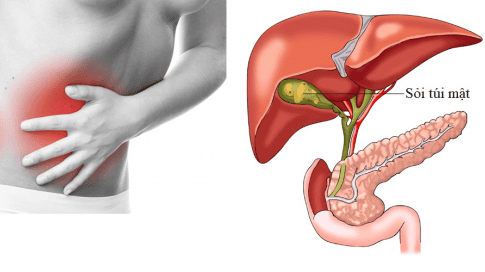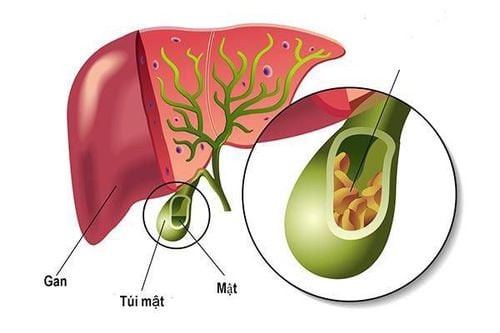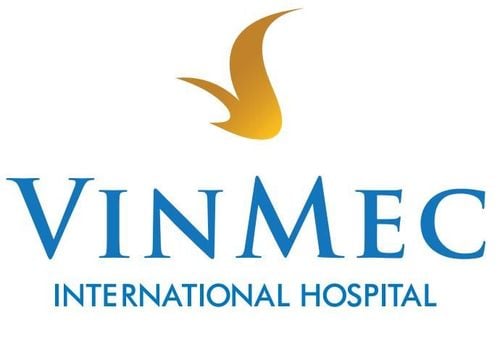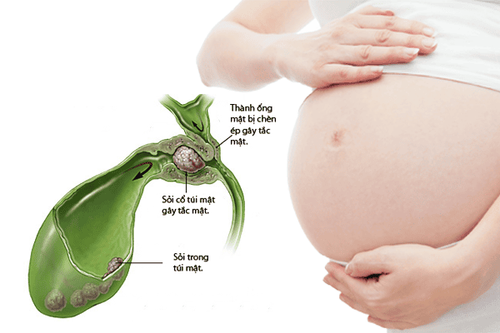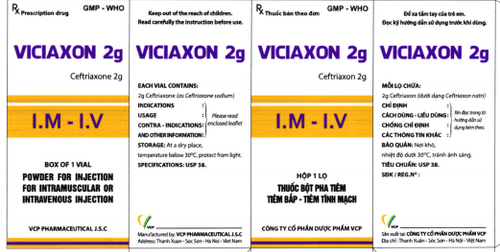This is an automatically translated article.
The article is expertly consulted by MSc Duong Xuan Loc - Gastroenterologist - General Surgery Department - Vinmec Danang International General Hospital.Gallbladder polyps, also known as gallbladder mucosal papillomas, are a tumor-like or pseudotumor lesion that develops on the surface of the gallbladder lining. This is a fairly common disease, which can present at any age (but mainly in adults, very rarely in children) and there is no significant difference in incidence between men and women.
1. Prevalence of gallbladder polyps
The prevalence of gallbladder polyps in the community today ranges from 0.03% to 9%. Compared with gallstones, gallbladder polyps are less common than gallstones, more common in women aged 30-50. The number and size of gallbladder polyps are also very variable, most often there is a polyp in the gallbladder with a size of less than 10 mm.Some people may have multiple polyps in the gallbladder or polyps up to 20-40mm in size, or have both polyps and gallstones. Benign gallbladder polyps account for about 92% of cases, including two types: true tumors such as adenomas, myomas, lipomas...; pseudotumor such as cholesterol tumor, adenomyoma, inflammatory pseudotumor... Malignant gallbladder polyp accounts for about 8%, including adenocarcinoma, melanoma, cancer metastasis...
2. Subjects at risk of gallbladder polyps
As well as the cause of formation, the risk factors leading to gallbladder polyps have not been found clearly and specifically. The risk factors of the disease can be:Age over 60 Patients with poor liver and biliary function Patients with high blood sugar, high blood fat levels. Obese patient. Patients infected with hepatitis virus The patient has a habit of eating a lot of fat, which increases the amount of cholesterol in the body. Patient has gallstones
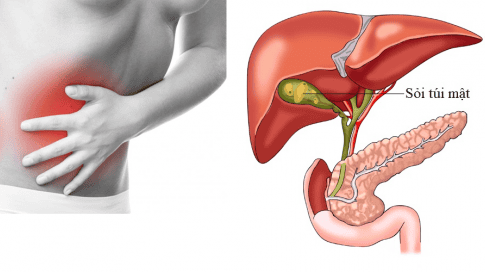
3. Effective gallbladder polyp treatment
The gallbladder is a component of the bile duct system, which plays a role in regulating bile secretion and food digestion, so it cannot be arbitrarily removed without an indication. 92% of gallbladder polyps are benign (non-cancerous) in nature, so patients do not need surgical intervention to remove the gallbladder.With polyps smaller than 1cm can only need regular monitoring every 3-6 months without surgery to remove the gallbladder. Polyps larger than 1cm have the potential to progress to cancer, especially those larger than 1.5cm, so cholecystectomy may be recommended to prevent gallbladder cancer growth. According to domestic and foreign studies, gallbladder polyps, if identified on ultrasound, are less than 10mm in size, most of which are benign. In addition, the images suggest malignancy when the polyp has spreading legs, irregular shape, and rapid growth. At that time, surgical intervention is indicated to remove the gallbladder.
Because it is impossible to have a probe to accurately diagnose the nature of gallbladder polyps without surgical intervention, doctors agree on the treatment regimen for gallbladder polyps as follows:
If in doubt Gallbladder polyps detected by ultrasound but the patient has no symptoms such as fever, pain, etc., should be re-examined after 6 months or 1 year to confirm. If after that time there are no more pictures of polyps, no further treatment is required. If the polyp image is still clear, it is necessary to periodically follow up with ultrasound every 6 months if the tumor is larger than 10mm, or there are malignancies detected by blood tests, other investigations or polyps have already appeared. clinical symptoms such as recurrent fever and pain should indicate early surgery. Today, with the development of laparoscopic surgery, laparoscopic cholecystectomy is a less invasive surgery, less pain, and patients recover quickly, with few complications.
4. Treatment of gallbladder polyps by laparoscopic cholecystectomy
Currently, all Vinmec General Hospitals perform laparoscopic cholecystectomy. The technique is performed by industry experts, modern machinery system, minimizing complications for the patient. Indications: Cases of gallbladder dysfunction. Contraindications:Patients with contraindications to intra-abdominal inflating Patients with a history of cardiovascular disease, heavy medical procedures Laparoscopic cholecystectomy:
Patients under endotracheal anesthesia, supine Surgeon Stand on the patient's left side at the level of the umbilicus. Enter the abdomen by the closed or open method, following the incision 1cm above or below the navel, place the camera, maintain the CO2 pressure (less than 15mm Hg). Placing more trocars under camera surveillance ensures the most favorable principle for surgery, (usually 2 more trocars are placed below the sternal breast and below the right flank) Using non-traumatic instruments to reveal the gallbladder Anatomy expose the cystic duct and cystic artery. Gallbladder neck duct and cystic artery are treated with clips or sutures Cut the gallbladder out of the gallbladder bed with a unipolar electrocautery For difficult-to-identify the gallbladder neck canal can proceed to cystectomy anterior biliary tract with a unipolar knife and then ligation, cut the cystic artery and posterior cystic duct Carefully examine the cystic duct, gallbladder bed, common bile duct and cystic artery Wipe the abdominal cavity, remove the gallbladder with a plastic bag Remove all the CO2 and close the trocar holes.

Vinmec owns a system of modern equipment, advanced medical machinery, and maximum support for the surgical process; Modern facilities, aseptic environment ensure patient safety, limit complications; A team of highly qualified medical professionals, well-trained at home and abroad, seasoned with experience, able to improvise and promptly handle unusual problems; Patients are cared for and closely monitored after surgery, rested to recuperate in a standard and fully equipped ward. Master. Doctor Duong Xuan Loc has more than 12 years of experience as a Gastroenterologist and is currently a Gastroenterologist at the Department of General Surgery - Vinmec Danang International General Hospital.
Please dial HOTLINE for more information or register for an appointment HERE. Download MyVinmec app to make appointments faster and to manage your bookings easily.





